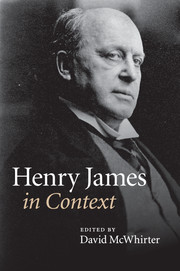Book contents
- Frontmatter
- Contents
- List of Illustrations
- Notes on Contributors
- Preface
- Abbreviations
- Chronology
- Part One Life and career, times and places
- Part Two Historical and cultural contexts
- Chapter 9 Aestheticism and Decadence
- Chapter 10 Authorship
- Chapter 11 Children
- Chapter 12 Consumer culture
- Chapter 13 Cosmopolitanism
- Chapter 14 Courtship, marriage, family
- Chapter 15 Ethics
- Chapter 16 Language
- Chapter 17 Law
- Chapter 18 Manners
- Chapter 19 Media and communication technologies
- Chapter 20 Modernism
- Chapter 21 Money and class
- Chapter 22 Museums and exhibitions
- Chapter 23 Nationalism and imperialism
- Chapter 24 Print culture
- Chapter 25 Psychology
- Chapter 26 Race
- Chapter 27 Realism and naturalism
- Chapter 28 Sexualities and sexology
- Chapter 29 Social sciences and the disciplines
- Chapter 30 Things
- Chapter 31 Time
- Chapter 32 Travel and tourism
- Chapter 33 Urbanity
- Chapter 34 Visual culture
- Chapter 35 Women and men
- Chapter 36 Work
- Part Three Reception
- Further reading
- Index
- References
Chapter 34 - Visual culture
Published online by Cambridge University Press: 05 August 2014
- Frontmatter
- Contents
- List of Illustrations
- Notes on Contributors
- Preface
- Abbreviations
- Chronology
- Part One Life and career, times and places
- Part Two Historical and cultural contexts
- Chapter 9 Aestheticism and Decadence
- Chapter 10 Authorship
- Chapter 11 Children
- Chapter 12 Consumer culture
- Chapter 13 Cosmopolitanism
- Chapter 14 Courtship, marriage, family
- Chapter 15 Ethics
- Chapter 16 Language
- Chapter 17 Law
- Chapter 18 Manners
- Chapter 19 Media and communication technologies
- Chapter 20 Modernism
- Chapter 21 Money and class
- Chapter 22 Museums and exhibitions
- Chapter 23 Nationalism and imperialism
- Chapter 24 Print culture
- Chapter 25 Psychology
- Chapter 26 Race
- Chapter 27 Realism and naturalism
- Chapter 28 Sexualities and sexology
- Chapter 29 Social sciences and the disciplines
- Chapter 30 Things
- Chapter 31 Time
- Chapter 32 Travel and tourism
- Chapter 33 Urbanity
- Chapter 34 Visual culture
- Chapter 35 Women and men
- Chapter 36 Work
- Part Three Reception
- Further reading
- Index
- References
Summary
The first time we see light . . . we are it rather than see it.
William James, Psychology: Briefer Course (1892)During an era of dramatic innovation in the capturing, projecting and printing of images, Henry James was fascinated by the relationship between visual experience and what we today call cultural identity. As advances in photography and print technology transformed the books and magazines through which he reached his audience, James looked to painting as the best analogy for crafting a novel. Later in his career, he reacted to the changing patterns of global capital flow by revising these visual analogies. Hoping to preserve in the novel a sense of cultural aura, he struggled to contemplate the extensive scale and anonymity of an industrial economy that he feared helped to fuel the Great War.
Nearly twenty years after the American Civil War, a 41-year-old James enjoyed his popularity and looked forward to further literary success. With optimism he famously asserts in the essay ‘The Art of Fiction’ (1884) that, ‘the analogy between the art of the painter and the art of the novelist is, so far as I am able to see, complete’ (LC-1, 46); their ‘inspiration is the same, their process (allowing for the different quality of their vehicle), is the same, their success is the same. They may learn from each other, they may explain and sustain each other’ (46). This analogy folds the act of looking at the world into the acts of framing, representing and interpreting it. As cooperating participants in the novel, readers and authors build scenes in which characters, plots and settings are structurally interdependent. Harkening back to eighteenth-century conventions of aesthetic judgment, James urges the would-be novelist to ‘guess the unseen from the seen, to trace the implication of things, to judge the whole piece by the pattern, the condition of feeling life in general so completely that you are well on your way to knowing any particular corner’ (53). By exercising our powers of inference, we find that ‘impressions are experience’, and we stretch our imagination by reworking principles of taste upon which great artists had based scenes harmonizing peoples with places in the course of volatile and bloody histories. James sums up his advice: ‘Try to be one of the people on whom nothing is lost!’ (53).
- Type
- Chapter
- Information
- Henry James in Context , pp. 364 - 377Publisher: Cambridge University PressPrint publication year: 2010

